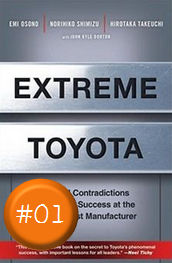Educatief filmpje met uitleg van de begrippen Takttijd, cyclustijd en doorlooptijd.
In het commentaar geeft Rafael Wollmann een aanvullende uitleg over begrippen 'cycle time' en 'Lead time':
![]()
The difference between Cycle Time (CT) and Lead Time (LT) is academic, but valuable enough for practitioners, in order to avoid employee's misunderstanding. Here we go:
1. CT is a RANDOM VARIABLE and is associated to the process. CT is subject to variations, because every productive system has variability, some more intense and some other ones less. That's why it is considered random, you have the Average CT and the variance (or standard deviation) of that. The variance (or std dev) can be increased based on downtimes for example.
2. LT is a DECISION VARIABLE and is associated to the decision maker and customer (client). The decision maker needs to know which is the CT and its variance to estimate the LT. With LT on hand and known due date, the decision maker can run the planning process in order to meet demand on due date.
In summary, CT needs to be less than or equal LT to meet demand.
Analyzing it quickly: If CT is greater than LT, your process is not capable to meet demand in due dates. If CT is equal to LT, your process must have zero variability, otherwise your process will not be capable to meet demand. If your CT is much lower than LT you will have inventory.
So, you need to keep control of your process in order to keep low variability under control, to have a consistent CT to estimate LT and run your process at your Takt Time.




















